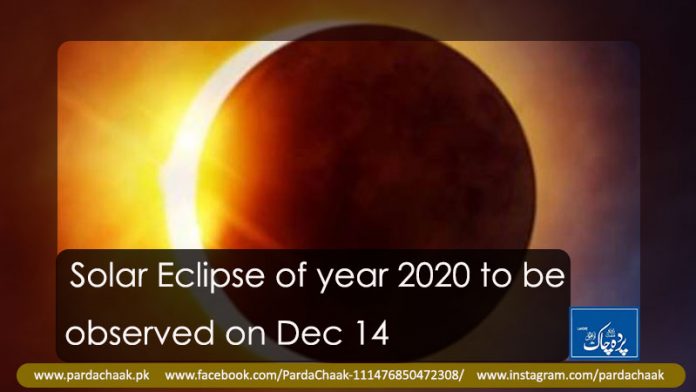The solar eclipse of 2020 would be witnessed internationally on 14 December, the second time in a year. It would be the last annular solar eclipse of the year 2020. Report
Conferring to the met division, the second solar eclipse of 2020 could not be observed in Pakistan. It could be seen in other regions of the world including South Africa, countries in South America, and other parts of the globe. The occultation could also be witnessed in zones falling adjacent to the Indian Ocean, Atlantic Ocean, and Antarctic Ocean.
It is relevant to discuss here that the solar eclipse, generally known as the ‘ring of fire’ was witnessed in diverse areas of Pakistan on June 21, 2020.
How Does Solar Eclipse Occur?
Solar Annular eclipses occur when the Moon passes between Earth and the Sun is not quite close enough to our planet to entirely vague sunlight, leaving a thin circle of the solar disc visible.
They occur every year or two, and can only be observed from a slender pathway across the planet.
Eclipse of the sun always occurs about two weeks before or after the eclipse of the moon, when the Moon travels into Earth’s shadow. Lunar eclipses are observable from approximately partial of the Earth’s surface.
The last blood moon (lunar eclipse), which was not visible as well in Pakistan, was observed on November 30.
Also Read Dr. Noam Chomsky to deliver a lecture at Habib University
It was at its ultimate at 2:42 pm and finished at 4:53, the met department said whilst naming it a penumbral eclipse of the moon, something dissimilar from a whole and partial eclipse.
The lunar eclipse was noticeable in South and North America, Australia and some other regions of Asia.




















